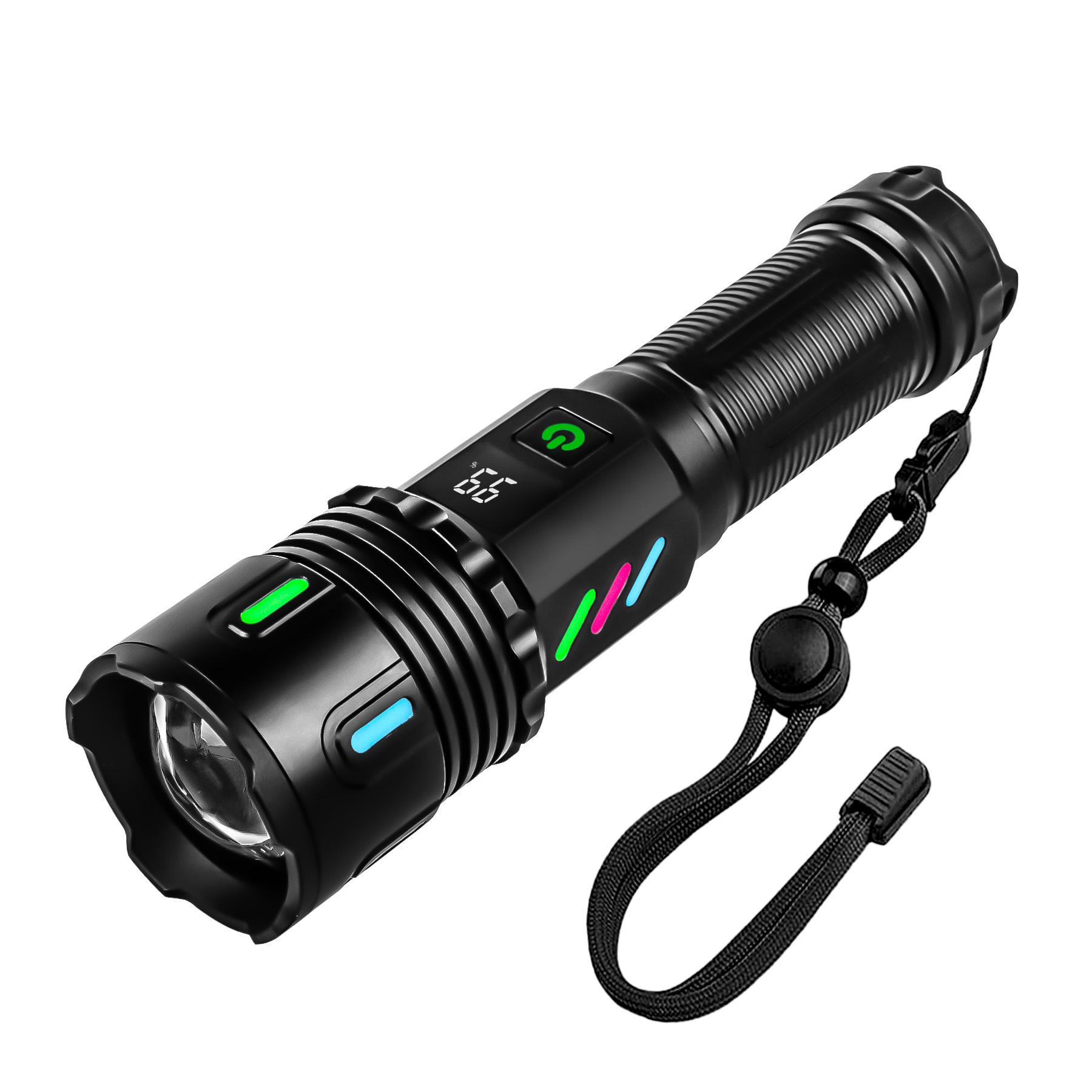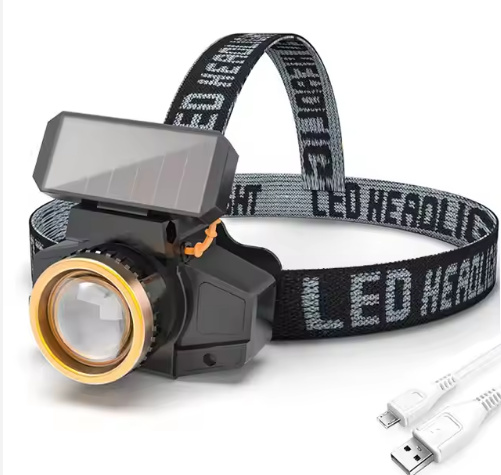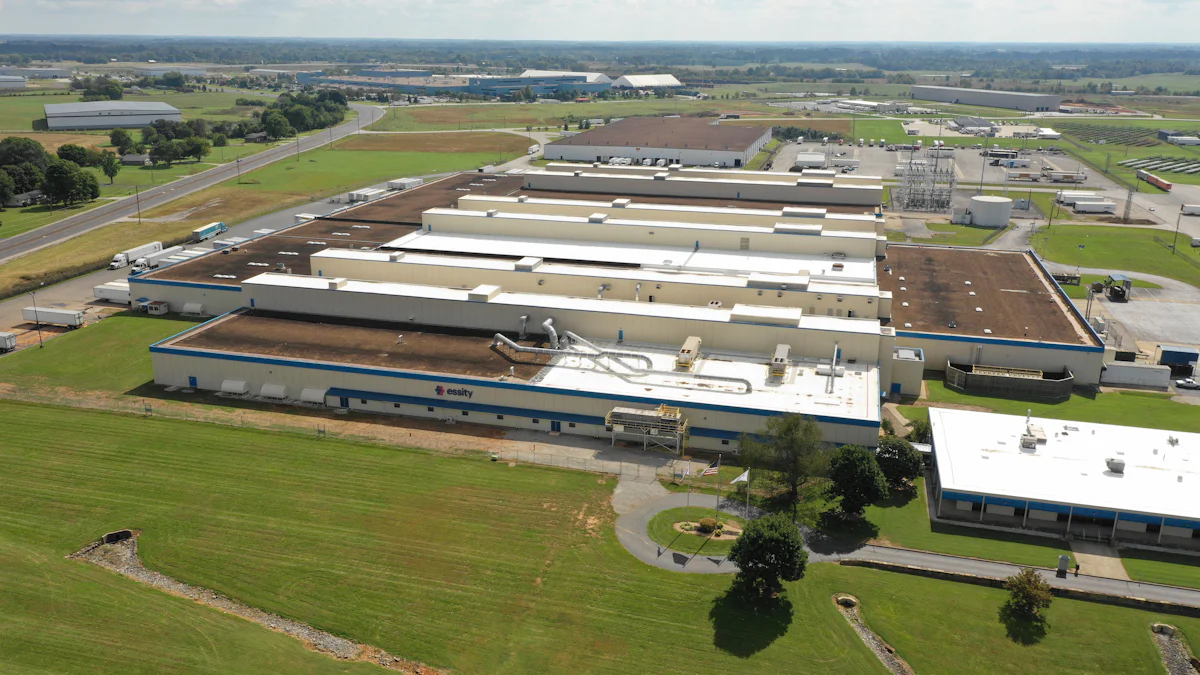Sustainable Flashlight Supply Chains in Western Europe: A Growing Trend

You may have noticed a shift in how products are made and delivered. Sustainable flashlight supply chains in western europe: a growing trend, reflect this change. Companies in western europe are adopting eco-friendly practices to meet consumer expectations and reduce environmental harm. This shift matters because sustainability strengthens brand image and attracts eco-conscious buyers. It also improves product durability and efficiency, which modern consumers value. By optimizing energy use and upgrading equipment, manufacturers can cut costs while reducing waste. These efforts not only align with global goals but also make supply chains more resilient to market changes.
Key Takeaways
Using eco-friendly methods in flashlight supply chains improves brand reputation and draws green-minded buyers.
Clear production steps create trust and make people pick green products.
Rules like the European Green Deal make companies use cleaner ways, helping nature and customers.
New tools and materials lower pollution and make supply chains work better.
Buying eco-friendly items can push industries to go green and use better practices.
Consumer Demand for Sustainability

The Rise of Eco-Conscious Consumers
Shifting preferences toward sustainable products.
You might have noticed how consumer habits are changing. Eco-conscious consumers are driving a shift toward sustainable products. In Western Europe, this trend is growing rapidly. For instance, 14.3% of people identified as eco-conscious consumers in 2019, showing that this mindset spans all age groups. Many shoppers now prefer to buy fewer but higher-quality items. Over half of them also choose secondhand products at least once a year. These choices reflect a desire to reduce waste and support sustainability.
Younger generations are leading the way in adopting sustainable practices. Many find upcycled products appealing and actively seek brands that align with their values. This shift has influenced industries, including flashlights, where consumers demand eco-friendly designs. By choosing sustainable flashlights, you can reduce your carbon footprint while supporting companies that prioritize the planet.
Transparency as a key factor in purchasing decisions.
Transparency plays a crucial role in purchasing decisions. You likely want to know how a product is made and whether it aligns with your values. Nearly three-quarters of European consumers expect companies to invest in sustainability. This expectation has pushed businesses to disclose their environmental practices. For flashlight manufacturers, this means sharing details about materials, production processes, and packaging.
When companies are transparent, they build trust with eco-conscious consumers. This trust encourages you to choose their products over competitors. Transparency not only satisfies your curiosity but also ensures that your purchases contribute to a more sustainable future.
Sustainability and Brand Loyalty
How eco-friendly practices build consumer trust.
Eco-friendly practices strengthen trust between you and the brands you support. For example, 92% of shoppers consider sustainability important when choosing a brand. Companies that prioritize sustainability enhance their reputation and attract loyal customers. You are more likely to stick with a brand that aligns with your values, especially if it uses green packaging or ethical sourcing.
Ignoring sustainability can harm a company’s image. On the other hand, adopting eco-friendly practices shows a commitment to the environment. This commitment resonates with eco-conscious consumers like you, fostering long-term loyalty.
Examples of consumer-driven demand in the flashlight industry.
The flashlight industry has seen significant changes due to consumer demand. Many of you now prefer products that minimize environmental impact. This preference has led manufacturers to adopt sustainable practices. For instance, some companies focus on creating flashlights with recyclable materials or energy-efficient designs. By choosing these products, you support innovation and encourage others to follow suit.
Your choices directly influence the market. When you opt for sustainable flashlights, you send a message to manufacturers. This message pushes them to prioritize sustainability, ensuring that their products meet your expectations. Together, these efforts create a more eco-friendly industry.
Regulatory Influences on Supply Chains
European Union Sustainability Policies
Key regulations shaping supply chain practices.
You might wonder how regulations influence supply chains in Western Europe. The European Union (EU) has implemented strict policies to promote sustainability. These policies aim to reduce environmental harm and encourage ethical practices. For example, the EU’s Circular Economy Action Plan focuses on minimizing waste and reusing materials. This plan pushes companies to rethink their production processes and adopt greener methods.
Another key regulation is the Corporate Sustainability Reporting Directive (CSRD). This directive requires businesses to disclose their environmental and social impacts. By doing so, it ensures that companies remain accountable for their actions. These rules not only protect the environment but also help you make informed choices as a consumer.
The European Green Deal and its impact on the industry.
The European Green Deal plays a significant role in shaping the consumer-goods industry. This ambitious plan aims to make Europe climate-neutral by 2050. It encourages industries, including flashlight manufacturers, to reduce carbon emissions and adopt renewable energy sources. For instance, companies are now exploring ways to use recycled materials in their products.
This deal also promotes innovation. Businesses investing in sustainable technologies often gain a competitive edge. As a result, you benefit from eco-friendly products that align with your values. The Green Deal ensures that sustainability becomes a core part of supply chain operations across Western Europe.
Challenges of Compliance
Adapting to stricter environmental standards.
Meeting these regulations can be challenging for companies. Stricter environmental standards require businesses to overhaul their supply chains. For example, manufacturers must switch to renewable energy or source materials responsibly. These changes demand significant time and resources.
However, many companies see these challenges as opportunities. By adopting circular economy models, firms can reduce operational costs by up to 20%. This approach not only helps them comply with regulations but also improves efficiency. You, as a consumer, benefit from products that are both sustainable and affordable.
Balancing cost and compliance in supply chain operations.
Balancing cost and compliance is a common hurdle. Companies often struggle to meet environmental standards without increasing expenses. Yet, innovative strategies are helping businesses overcome this issue. For instance:
Advanced technologies like blockchain improve supply chain visibility by 35%.
Sustainable sourcing boosts brand loyalty by 30%, according to a 2022 McKinsey report.
Partnerships with smallholder farmers enhance resilience and cut greenhouse gas emissions by 35%.
These strategies show that sustainability and cost-efficiency can go hand in hand. When companies prioritize compliance, they not only meet regulations but also build trust with consumers like you.
Industry Innovations and Strategies

Digitization and Optimization
Leveraging technology to reduce carbon footprints.
Technology plays a vital role in reducing carbon footprints in flashlight supply chains. Companies are adopting innovative solutions to minimize environmental impact. For example, many manufacturers now use eco-friendly materials like recycled plastics and bio-based polymers. Energy-efficient manufacturing processes, such as renewable energy sources and energy-saving technologies, also help lower greenhouse gas emissions. Promoting circular economy practices, like recycling components and designing for longevity, further conserves resources and reduces waste.
Innovation Type | Description |
|---|---|
Adoption of eco-friendly materials | Utilizing renewable resources like recycled plastics and bio-based polymers to create sustainable flashlights. |
Energy-efficient manufacturing processes | Implementing renewable energy sources and energy-saving technologies to lower greenhouse gas emissions during production. |
Promoting circular economy practices | Recycling components and designing for longevity to minimize waste and conserve resources in the supply chain. |
Real-time data for improving supply chain efficiency.
Real-time data transforms supply chain operations by enhancing efficiency. It enables accurate demand forecasting, reducing stockouts and overstock situations. Companies using real-time insights achieve a 15% reduction in operational costs and a 14% improvement in inventory turnover. Real-time data also improves resource allocation, cutting response times to disruptions by 50%. Enhanced logistics through continuous visibility optimizes delivery routes and lowers costs. These advancements not only streamline operations but also improve customer satisfaction through proactive communication and personalized experiences.
Vertical Integration
Enhancing sustainability through internal value chains.
Vertical integration strengthens sustainability by consolidating operations and streamlining processes. This approach reduces emissions and improves resource management. Nearly half of CEOs now include responsible supply chains in their sustainability strategies. By controlling more aspects of production, companies can ensure eco-friendly practices at every stage, from sourcing materials to delivering finished products.
Examples of vertical integration in flashlight manufacturing.
Flashlight manufacturers in western europe are adopting vertical integration to enhance sustainability. Some companies now produce their own components, reducing reliance on external suppliers. This strategy minimizes transportation emissions and ensures consistent use of sustainable materials. By integrating operations, manufacturers can better align with consumer expectations for eco-friendly products.
Sustainable Packaging
Transitioning to biodegradable and recyclable materials.
Switching to biodegradable and recyclable packaging aligns with consumer preferences. A recent study found that 92% of shoppers consider sustainability important when choosing a brand. Lightweight packaging reduces transportation costs by lowering fuel consumption. Governments also offer tax incentives for businesses adopting green practices. These benefits make eco-friendly packaging a smart choice for flashlight manufacturers.
Reducing waste with innovative packaging designs.
Innovative packaging designs reduce waste while protecting products. Options like mushroom packaging, made from compostable mycelium, and plant-based plastics offer sustainable alternatives. Water-soluble packaging provides a creative solution for single-use items. These designs not only minimize environmental impact but also enhance supply chain efficiency by optimizing storage and transportation.
Leading Companies and Initiatives
Pioneering Companies
Examples of flashlight manufacturers leading in sustainability.
Some flashlight manufacturers in Western Europe have become leaders in sustainability. These companies focus on creating products that align with eco-conscious values. For example, one manufacturer uses 100% recycled aluminum for flashlight casings. This approach reduces waste and conserves resources. Another company has adopted solar-powered production facilities, cutting carbon emissions significantly. These efforts demonstrate how businesses can innovate while protecting the environment.
You might also notice brands that prioritize energy-efficient designs. These flashlights consume less power, extending battery life and reducing energy use. By choosing such products, you support companies that actively work toward a greener future.
Case studies of successful sustainable supply chain transformations.
Real-world examples highlight how companies transform their supply chains. One flashlight manufacturer partnered with local suppliers to reduce transportation emissions. This collaboration shortened delivery times and minimized environmental impact. Another case involved switching to biodegradable packaging. This change not only reduced waste but also attracted eco-conscious buyers like you.
These transformations show that sustainability is achievable. Companies that embrace these changes often gain a competitive edge. Their success proves that sustainable practices benefit both businesses and the planet.
Collaborative Efforts
Partnerships and coalitions driving industry-wide change.
Collaboration plays a key role in driving change. Many flashlight manufacturers join coalitions to share resources and knowledge. For instance, some companies work with sustainable retailers to promote eco-friendly products. These partnerships help expand the reach of green initiatives. They also encourage more businesses to adopt sustainable practices.
You can also see industry-wide efforts through research collaborations. Groups of manufacturers invest in developing new materials and technologies. These innovations make it easier for companies to meet environmental goals.
The role of certifications and eco-labels in promoting sustainability.
Certifications and eco-labels guide you toward sustainable choices. Labels like FSC (Forest Stewardship Council) or EU Ecolabel indicate that products meet strict environmental standards. Flashlight manufacturers use these certifications to showcase their commitment to sustainability. This transparency helps you identify brands that align with your values.
Eco-labels also encourage companies to improve their practices. Meeting certification requirements often involves adopting greener methods. This process benefits the environment and builds trust with consumers like you.
The trend of sustainable flashlight supply chains in western europe highlights the benefits of adopting sustainable practices. These efforts reduce costs, improve efficiency, and foster customer loyalty. A green brand image attracts eco-conscious consumers while enhancing operational productivity. Sustainability also mitigates risks and ensures long-term business success.
To stay competitive, companies should innovate by investing in green technologies like renewable energy and energy-efficient systems. Designing products for recycling and adopting circular economy principles minimize waste. Evaluating suppliers based on sustainability performance strengthens supply chain responsibility. These actions not only protect the planet but also secure your business's future.
FAQ
What makes a flashlight supply chain sustainable?
A sustainable supply chain reduces environmental impact by using eco-friendly materials, minimizing waste, and adopting energy-efficient processes. It also ensures ethical sourcing and transparency in production.
How can you identify eco-friendly flashlights?
Look for certifications like FSC or EU Ecolabel. Check if the product uses recycled materials, energy-efficient designs, or biodegradable packaging. Transparent brands often share their sustainability practices on their websites.
Why is Western Europe leading in sustainable supply chains?
Western Europe prioritizes sustainability due to strict regulations like the European Green Deal. Consumer demand for eco-friendly products also drives innovation and adoption of greener practices.
Do sustainable flashlights cost more?
Sustainable flashlights may have a slightly higher upfront cost. However, their durability, energy efficiency, and reduced environmental impact often make them more cost-effective in the long run.
How can your choices influence the flashlight industry?
Your preference for sustainable products encourages manufacturers to adopt eco-friendly practices. By supporting green brands, you help drive industry-wide change toward sustainability.
See Also
Essential Factors and Trends in Choosing Flashlight Suppliers
Boosting Revenue by Sourcing Flashlights from Wholesalers
The 2024 Handbook for the Flashlight Industry in America
Advice on Finding Dependable Wholesale Flashlight Suppliers
Building Strategic Alliances with Flashlight Wholesalers for Retailers
About US
Follow Us
Hello,Friend,
I am Mary from Helius, we are manufacturer of LED lighting products with more than a decade of experiences.
We offer hot selling products in market and guarantee the quality with competitive cost.
Let’s have more discussion on your inquiry.
Or you can reach out me via what’s up/tele gram +8618123952945 if it’s favorable to you.
Address
4th Floor, Building A16, Intelligent terminal industrial park of Silicon Valley, Dafu Industrial Zone,Guanlan, Shenzhen, 518110 China
Contacts
mary@heliuslights.com
heliuslight04@hotmail.com
+0086 18123952945
